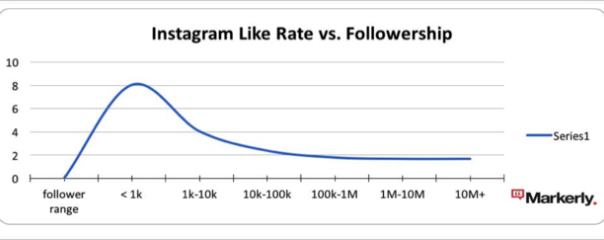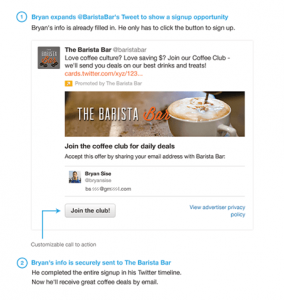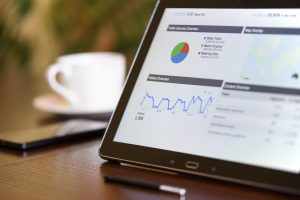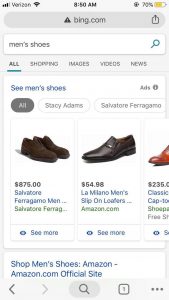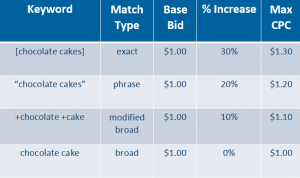For decades, word-of-mouth promotion has been a substantial contributor to all kinds of business successes. The biggest issue about this type of marketing is the lack of a system to measure results and incoming traffic. With social media movement becoming increasingly relevant in marketing tactics, research has shown that using micro-influencers is a better way to drive business with more documentation.
What is a micro-influencer and why are they so effective?
Jonah Berger, marketing professor at the University of Pennsylvania, and the Keller Fay Group, the leading authority on word of mouth marketing research, teamed up to study the new rise of micro-influencers. They described the term as: “a person who has a greater than average reach or impact through word of mouth in a relevant marketplace. Micro-influencers are not traditional celebrities, but rather individuals who work in their category or are truly knowledgeable, passionate and authentic and are seen as a trusted source when it comes to recommendations for what to buy.”
Micro-influencers typically have a large number of followers, between 1k-100k followers with a more specifically targeted audience than the average Hollywood celebrity. An article written by Ted Dhanik of adage.com emphasizes the importance of these lower level individuals of interest. According to Dhanik, using micro-influencers can drive advertising towards a smaller, but more engaged audience with relevant interests, thus generating better results. The people behind the profiles are real, raw and more authentic than the pop-stars and A-listers.
Dhanik continued the article by describing micro-influencers as having a genuine connection with their followers. Their products/services tend to be more affordable. They drive higher engagement rates. All of this is backed up with data found through research conducted by Markerly.

When comparing the amount of Instagram likes to number of followers, Markerly found that profiles with roughly 1,000 followers had an eight percent response rate vs. profiles with 10,000 to 1 million had under two percent.
The data is very similar when looking at Instagram comments:

Even though the quantity of activity on profiles exceeding 100k followers may be greater than those with 10k-100k followers, the overall percentage of activity is greater and the audience more specific, thus making influencers with less followers more effective.
Elaborating on the importance of targeted marketing, followers of profiles that do not hold a high status are following them because of their experience and knowledge of a specific topic, such as surfing or beauty. The Kim Kardashians of social media have a large following because of their status and name, making them less credible when giving product advice or recommendations.
To put it into perspective, desserts.paradise is an Instagram profile targeted at everyone’s sweet tooth. The page has 46.5k followers, putting it in the mid-range of micro-influencers. Most photos generate up to 6,000 likes. A high 13% response rate like this one is essential to success.
Social media promotion works much like traditional word of mouth advertising in many ways, but produce greater results. According to surveys conducted by Berger and the Keller Fay Group, micro-influencers engage in purchasing related conversations 22.2 times more than the average consumer would when asked their opinion of a product. They also found that influencers are more direct when speaking to prospective customers on product knowledge, with 74% encouraging product purchase compared to 66% of general population recommendations.

A study by Dr. Jonah Berger and the Keller Fay Group
Not only are micro-influencers effective in reaching a massive audience of prospective consumers, the cost of hiring them is lower. According to data on “Influencer Marketing for Dummies,” influencers collect $ 75-$ 3,000 per image, depending on the amount of followers they have.
A profile with 10,000-100,000 followers will run a company $ 250-$ 1,000 per image, putting micro-influencers at one third or less of the cost of macro-influencers and celebrities. Some influencers may even accept free product samples as compensation for honest post reviewing the product. This could backfire if they are not satisfied with the item or if they are not posting quality content related to your brand.
Another way to successfully gain sales through micro-influencers is to create a discount or free trial code for them to advertise to their followers. This will not only encourage people to purchase your product, but is also a way to measure the amount of traffic an influencer is generating so you know what is working and what is not.
(Also here the edit makes the idea not correct. I tried re-wording this.. but I’m not sure how else to say it. May need an example? I can send you one if you’re confused on the idea, but basically a company make the code “LaurenK” to give 10% off anything on their website, then I would advertise it to my followers and they can use the code, creating a desire to buy and a way to track where the sales are coming from.)
How to choose and find the right influencer:
Profile relevance to your product is very crucial. Hiring a hair stylist to promote cooking equipment is an example of poor product relevance. Even if they have a large number of followers, the people being reached are not in the target audience your brand is trying to connect with. Promoting hair or beauty products through the same influencer is an example of strong product relevance, and will have a much higher response rate.
Fans of your brand are a perfect start to looking for a relevant and high-impact micro-influencers. Go through your business Instagram followers or search a specific hashtag tied to your product and look for people posting positive comments or reviews of your product. A micro-influencer doesn’t need thousands of followers to be effective, and these are the people who will likely post for free samples of your product, making it much more cost effective.
Not only should your content align with your product, but the tone and style of a profile should also correlate with your brand. For example, Daniele Zaccone’s Instagram page, handle danielre, was featured on Forbe’s top ten impressive Instagram profiles to follow. The Italian Flair Media & Danielre™ CEO has composed his Instagram page of elegant photos displaying trendy menswear and suits. He strategically angles the photos to emphasize his outfits, which have a simple, classy vibe. A profile similar to this would be ideal for promoting luxury men’s watches, dress shirts, ties or other related products, but not fitting for a T-shirt company specializing in humorous or playful concepts. Even though they are both categorized as fashion, the tone is different.

An ideal micro-influencer will consistently post high-quality content and photos. Look at their past photos, either personal or promoting a different brand if applicable, and determine if they are well edited, done professionally, or look professional. You won’t want your brand posted alongside bad quality images, even if your brand photos are done well. It tampers with your brand’s credibility.
Make sure that you read the captions the micro-influencers add to their photos. Are they original? Are they staged? Do they have grammatical or spelling errors? You have the option as a brand using micro-influencers to either give them control over the caption paired with their photo or give them a scripted caption to use. Most of the time, they are given free reign with the content because it is more sincere and genuine coming from the profile’s owner. It is noticeable when someone speaks out of character. Also provide the micro-influencers you are working with a few hashtags to include in their captions.
Another important factor that makes a micro-influencer more effective is their response rate to followers. Check the comments on personal and promotional photos to see if the influencer is replying to questions or remarks on their posts. If the influencer is not engaged with their followers, and is asked a specific question regarding your product that may make or break a sale, their lack of response could affect your business in the long run.
With using the micro-influencers to improve your brand on Instagram guide, paired with social media monitoring you and your business will be on the way to a successful social media campaign!
Article first published on Buzzlogix Social Media Monitoring blog.
Digital & Social Articles on Business 2 Community(87)
Report Post